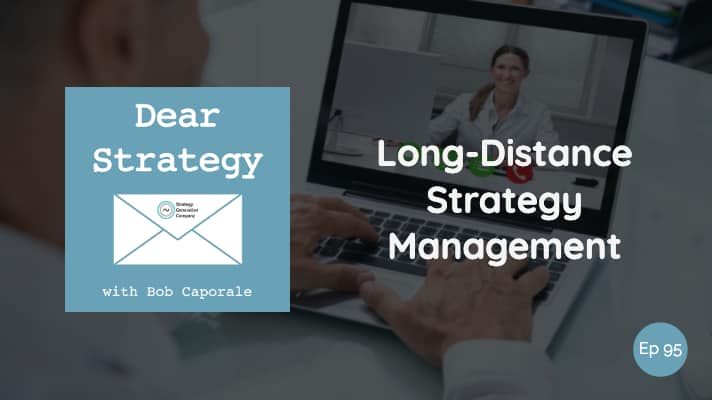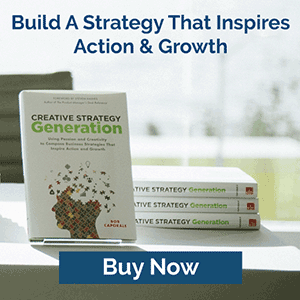Dear Strategy:
“How do we best handle having the Engineering and Innovation groups working in different locations than the Manufacturing groups? (i.e. How do we manage the long-term strategy for Manufacturing and Engineering in two different locations?)”
Before I answer this question, I should warn you ahead of time that my position here may come off as being slightly contradictory to the one I took just two posts ago with regards to product managers needing to spend more “face time” with their customers and markets. However, as I hope you’ll see by the end of this post, the situation being asked about here is quite a bit different, and my main focus is going to be on exactly why that is.
Let’s start with the fact that the situation described in this question is what one would expect to see in most large, complex organizations. For smaller businesses with singular manufacturing locations, I suppose it might be more common for the Engineering and Manufacturing teams to be co-located in the same facility. But, as soon as a company grows past its first plant, that scenario will become more of a luxury than a norm.
Given this fact, you might expect my answer to be that these teams simply need to find a way to spend more “face-to-face” time together. And although I 100% stand behind the fact that nothing can truly replace the effectiveness of real-life human interactions, I actually don’t believe that this type of interface is required in every single business situation.
Like most things in business, these decisions always come down to cost versus value. Traveling is expensive. Sometimes, REALLY expensive. Which means that you only want to do it when the reward outweighs the cost. And that also means you’re going to need some criteria to help you decide exactly when that will be, which, in my eyes, all comes down to whether your situation requires a quantitative interaction, or a qualitative interaction.
Quantitative interactions are all about exchanging information that can be precisely measured. And, for those cases, I believe remote interfaces can be quite effective because, let’s face it, the data isn’t going to change based on the format in which you receive it.
Qualitative interactions, on the other hand, are all about exchanging feelings, emotions, behaviors, or any other type of information which must be interpreted before it can be analyzed. And, in those cases, I believe you have to be physically present with a person in order for that interpretation to be even remotely accurate. That makes sense, if you think about it, because this type of information requires hefty doses of empathy and feeling – both of which are far too easy to ignore when you’re not standing in front of someone and looking them directly in the eye.
Many (not all, but many) of the interactions between Engineering and Manufacturing will be of the quantitative variety; which is why I believe a long-distance relationship can actually work fairly well between these two teams. Of course, that’s not to say that this relationship should involve zero human interaction. But, unlike those exchanges that are expected to be far more qualitative in nature, these more technical relationships can be fostered quite successfully via primarily remote means.
“Many of the interactions between Engineering and Manufacturing will be of the quantitative variety; which is why I believe a long-distance relationship can actually work fairly well between these two teams. “
So, back to the question at hand, how exactly should an arrangement like this be managed?
In the direction of Engineering to Manufacturing, I suggest a cadence of communication that looks something like the following:
- Daily electronic communication (i.e. email)
- Weekly to monthly remote update meetings (i.e. video and/or phone conference)
- Quarterly to bi-annual plant visits from key engineering leaders and project stakeholders.
- Regular phone communication on an as-needed basis
This routine should provide a healthy balance of information exchange, while still maintaining enough human interaction to prevent any emotional misunderstandings that might otherwise have occurred.
In the direction of Manufacturing to Engineering, I recommend that, as much as possible, Engineering be involved in any regular update meetings that may be taking place within the plant environment. Many companies have adopted the Lean concept of utilizing daily Gemba Walks to help facilitate communication between different parts of their various manufacturing functions. Using modern communication technologies (i.e. mobile video conferencing), or even remote-controlled robotic devices, Engineering can easily take part in these walks from remote locations without sacrificing any of the information that is being exchanged.
So, that’s it in a nutshell. Have a strategy, determine if your interactions are qualitative or quantitative in nature, and then manage those respective interfaces accordingly. If you follow these basic steps, you might just be able to turn a long-distance relationship into a successful long-term marriage…assuming that is what you are, in fact, trying to achieve.
Listen to the podcast episode
Dear Strategy: Episode 095

###
Are you interested in strategy workshops for your product, marketing, or business managers? If so, please be sure to visit Strategy Generation Company by clicking the link below:
 Bob Caporale is the founder of Strategy Generation Company, the author of Creative Strategy Generation and the host of the Dear Strategy podcast. You can learn more about his work by visiting bobcaporale.com.
Bob Caporale is the founder of Strategy Generation Company, the author of Creative Strategy Generation and the host of the Dear Strategy podcast. You can learn more about his work by visiting bobcaporale.com.






